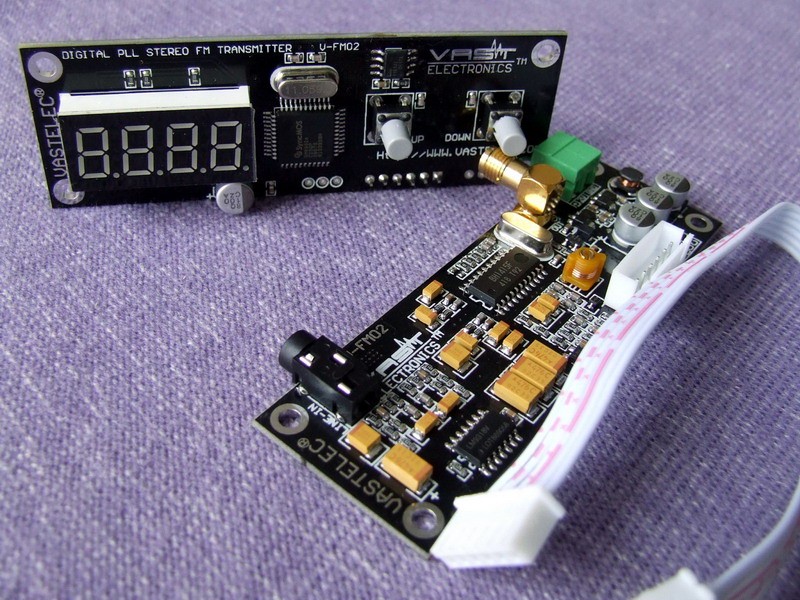Vastelec FM02: Difference between revisions
Ukewarrior (talk | contribs) |
Ukewarrior (talk | contribs) |
||
| Line 242: | Line 242: | ||
They may also be available at [http://wlcventures.com/zencart/index.php?main_page=product_info&cPath=4&products_id=19&zenid=lhabueje8vmh5n92eb5c4m9t86 WLC Ventures]. | They may also be available at [http://wlcventures.com/zencart/index.php?main_page=product_info&cPath=4&products_id=19&zenid=lhabueje8vmh5n92eb5c4m9t86 WLC Ventures]. | ||
They have also been seen for sale on eBay. | They have also been seen for sale on eBay from seller: HLLY. | ||
== RDS hookup information == | == RDS hookup information == | ||
Revision as of 17:42, 7 November 2011
The FM Transmitter with DIY possibilities
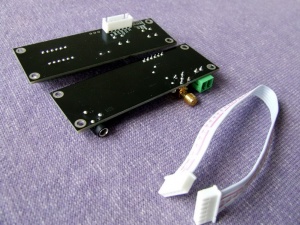
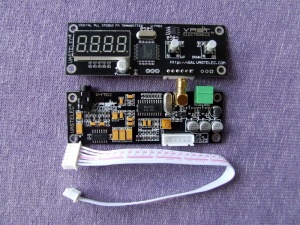
The FM02 is a two board FM transmitter. It accepts a stereo audio source and outputs a stereo FM broadcast signal on the frequency shown on the LED display. It comes just as shown in the picture above.
It is rated at 30mw (that's milli-watts) of transmission power. For most Christmas DIYers this is a nearly perfect amount of power. It will transmit a clear signal for about 2 blocks or 1/4 mile. Why is this good? Because it is illegal in the USA to transmit other then very low amounts of FM radiation without an FCC license.
Skip to this section for more details: [FCC Rules]
The FM02 is not a complete unit ready for use. Instead, it bridges the gap between an out-of-the-box solution, and a build-your-own unit that starts with a bare PCB and a bag of parts.
The FM02 is very small, but packs in a nice set of features.
Key to these is the use of PLL (Phase Locked Loop) technology. PLL keeps the transmitter locked into the designated transmitting frequency without it drifting up or down. This frequency drift WILL occur on other FM transmitters without PLL as the temperature around the unit goes up or down.
The second key feature is the fact that the transmitting frequency is maintained even after power is turned off and back on.
The FM02 is a very sophisticated assembly. Building a unit of this capability and size would be nearly impossible for most DIY'ers.
So, to create a usable FM transmitter, the FM02 needs some help. The builder of the transmitter will take the FM02 and use it as the corner stone of a complete transmitter.
You will need the following items added to your FM02:
- Power. For details, see the POWER section below. 100ma is enough current.
- An Antenna. Never power your unit without an antenna.
- A mounting enclosure. You will need to mount the FM02 boards somewhere safe and dry.
- Connection to a stereo Audio Source. The FM02 has a 3.5mm audio jack.
About VAST Electronics & Product Warranty
VAST warranties the FM02 for two years. The trick with this warranty is that it requires the product to be returned for repair to VAST in China. IF you can catch a group buy in progress on doityourselfchristmas.com, you can also request a replacement when that order is placed with VAST.
Power Requirements
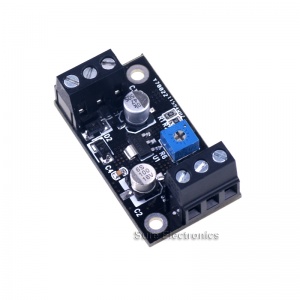
Do NOT power it up without an antenna. You don't need to have your 'real' antenna ready for this. You can put an sma-to-BNC adapter on and then stick a 12" piece of wire into the center of the BNC connector. This will dissipate the RF energy just fine. Just be sure you don't enlarge the hole inside the BNC.
DO NOT apply anything GREATER then REGULATED 9V-16V DC to your unit. If you aren't sure, then ask for help in the forums. Use a meter to check the voltage first. If all you have is a wall-wart that is labeled 12V, then that is most likely NOT regulated. A simple test of the output voltage with a meter will tell the tale. I use one of the voltage regulators from Sure Electronics with my unit (Part number:PS-SP12113). These are about $5 online.
You need very little power for an FM02. A power supply rated at only 100ma is sufficient.
When you connect power to the FM02 it is VERY important that you get your positive(+) and your negative(-) correct. If you hook up the power incorrectly, you can easily damage/ruin the unit.
Do you have a HUM ?
Many folks will experience some HUM in the transmitted audio. This is normal. The good news is that you should be able to eliminate this hum with the use of a Ferrite Bead.
If you look at the tech that is already in your house, you will see these beads on lots of things. They are in power cords, and even ethernet cables. I get mine for free this way. I just cut them out of these cords. If you work in an office, you can usually go to the cube of the LAN/Networking guys and ask them for an excess power cord with one of these 'bumps' in the cord. They usually have dozens of extras laying around.
As far as size, you want to be able to wrap the wire through the hole and around the perimeter 3 times for maximum effect. You also need to wrap it tightly and secure it in place with a nylon tie wrap. So, it depends on the size of the wire that comes out of your wall wart, you need to have a diameter that can fit three wraps of the wire and the tie.
If you use a Wall Wart for power, you absolutely need a ferrite bead on the power cord coming out of the wall wart.
It is also a good idea to put a bead on the audio cable coming out of the PC.
The beads should be placed on the FM02 end of the cable.
Sometimes, it helps to put a ferrite bead on the audio cable between the PC and transmitter.
NOTE: it never hurts to put one or more ferrite beads on your cables. They may or may not eliminate your HUM, but they never make it worse.
Some Beads split in half, some don't !
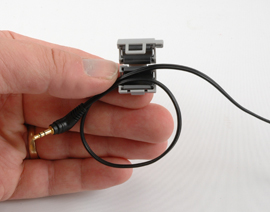
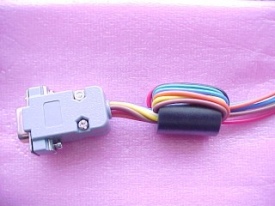
There are some good pictures in the wiki-pedia-:
http://en.wikipedia.org/wiki/Ferrite_bead
Audio
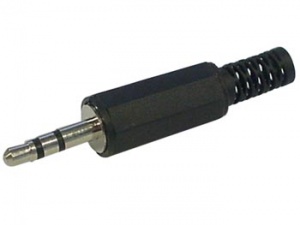
The FM02 has a standard 3.5mm stereo jack for the wire that is carrying your audio signal.
There is one key point about the audio. It works best with a line level audio input. The Audio Out jack on a PC is NOT line level. Line Level is a very low volume level signal. The Volume level on your PC needs to be set very low, barely audible. If you overdrive the audio signal, it will result in a FM transmission that will sound distorted.
.
Detailed Board Dimensions
Outline of the 'display' board.
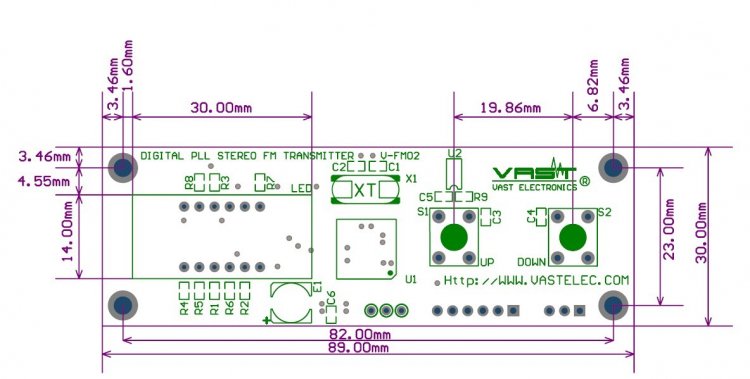
The second board has the same physical outline dimensions. It also lines up with the 4 corner mounting holes.
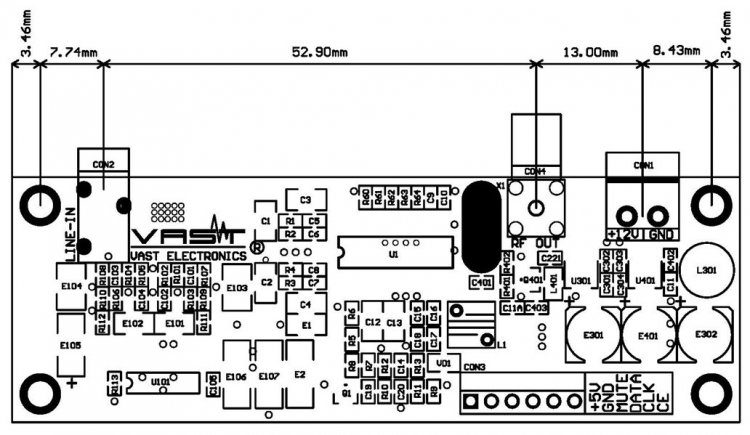
Here is a pdf file that contains a scale outline that will serve as a template for the display board. You would use this to create your own bezel if you want to dress-up your installation: [Bezel Template]
Antenna
The FM02 has an antenna connection that will look a bit unusual to most folks. It is known as an SMA type of connector.
Most DIY'ers will want to convert this to the BNC type of connector because BNC components are easier to find. The converter shown below will correctly hook to the FM02. SMA is the smaller gold connector.
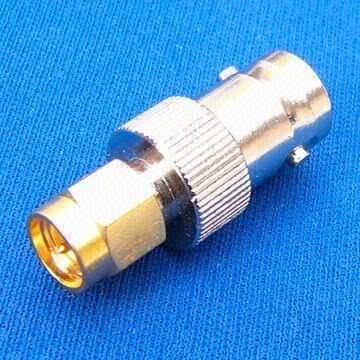
You will need to buy or make an antenna. There are MANY different designs for antennas. A large number of DIYers have made a type of antenna known as a dipole. This is an easy to make antenna that will serve almost anyone's needs. Here is a link to a pdf with instructions to make your own:
How to Make a Dipole Antenna
What Frequency to Use
This is real simple, go to this website and find a frequency that is unused. If there are no unused frequency's, then pick one that is not very powerful and get your radio out and check it out. If you can't pick up any radio stations at your house, odds are no one will complain when you start broadcasting on that frequency.
Where can I get one of these wonderful FM transmitters ?
These come up as group buys on the DIYC forum from time to time.
They may also be available at WLC Ventures.
They have also been seen for sale on eBay from seller: HLLY.
RDS hookup information
This section will grow over time. For now, here is a picture of hooking the pira mini-RDS unit up to an FM02
The green spot on the PCB is the RDS data hookup point.
The red spot is a section of the PCB that was scrapped away revealing the copper. This is used a a soldering point for the ground.
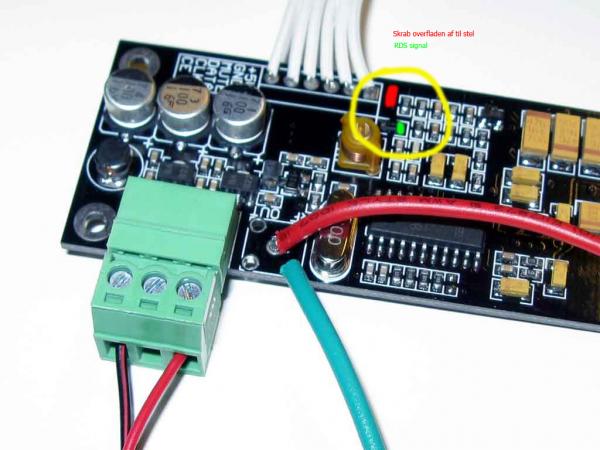
Another View of the GREEN RDS connection spot: Notice, the insert showing the full schematic of the hookup. Three capacitors are needed as noted.
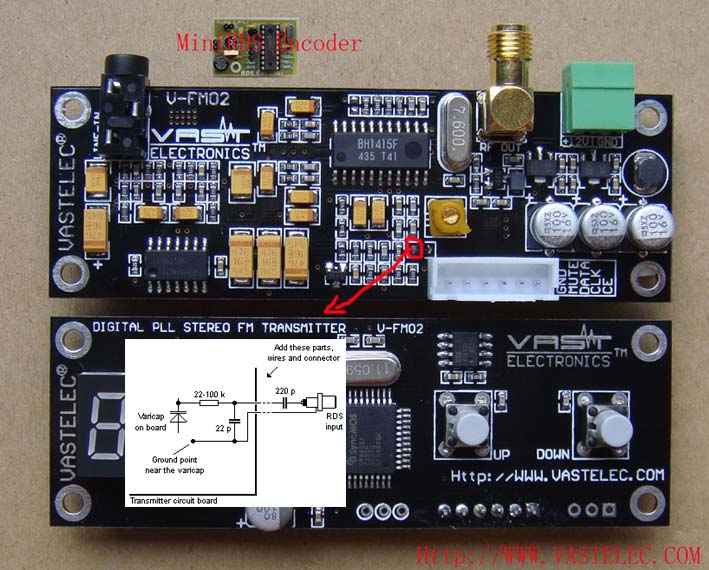
Additional Modifications
This optional modification is noted on the pira mini-RDS datasheet, but not implemented on the mini-RDS board from pira:
You can add a status LED to the mini-RDS board between pin 1 and ground, with a 2.2k Ohm resistor.
It blinks +- once per second when on, and really fast / almost steady on when transmitting RDS data to the transmitter...
.
Why you should care about the transmitting power of your transmitter
It's real simple: Do not transmit on a channel that is already in use by a commercial entity that can be heard in your location. The easiest way to do that is to not buy more transmitter then you need.
That is why the FM02 is such a good choice. Below is the official FCC (USA) verbiage discussing low power FM transmissions.
"FCC REGULATIONS FOR THE NON LICENSED OPERATION OR RADIO BROADCASTING"
PART15:
Unlicensed operation on the AM and FM radio broadcast bands is permitted for some extremely low powered devices covered under Part 15 of the FCC's rules. On FM frequencies, these devices are limited to an effective service range of approximately 200 feet (61 meters). See 47 CFR (Code of Federal Regulations) Section 15.239, and the July 24, 1991 Public Notice. On the AM broadcast band, these devices are limited to an effective service range of approximately 200 feet (61 meters). See 47 CFR Sections 15.207, 15.209, 15.219, and 15.221. These devices must accept any interference caused by any other operation, which may further limit the effective service range. For more information on Part 15 devices, please see OET Bulletin No. 63 ("Understanding the FCC Regulations for Low-Power, Non-Licensed Transmitters").
